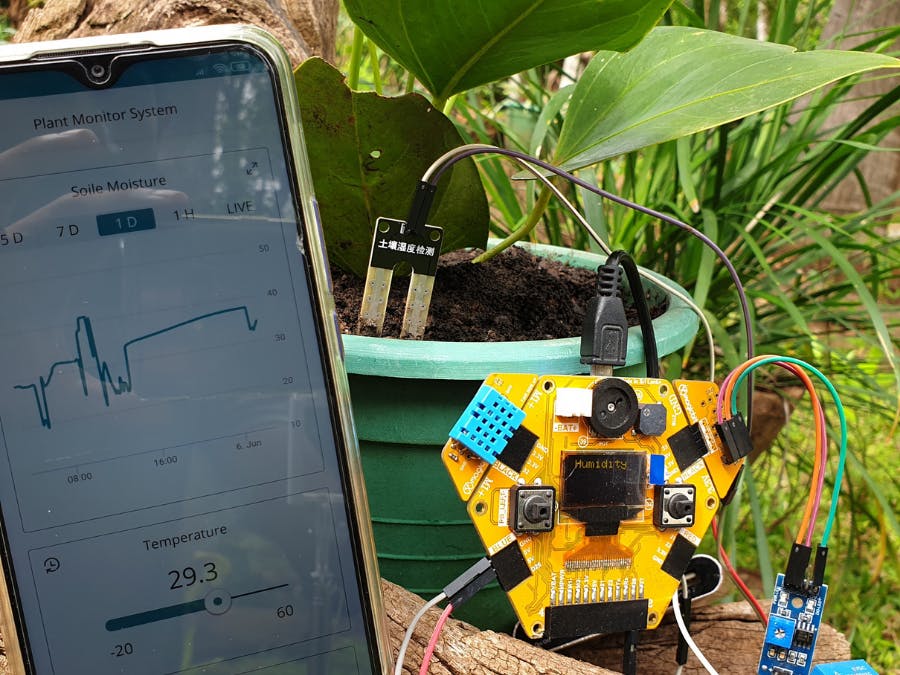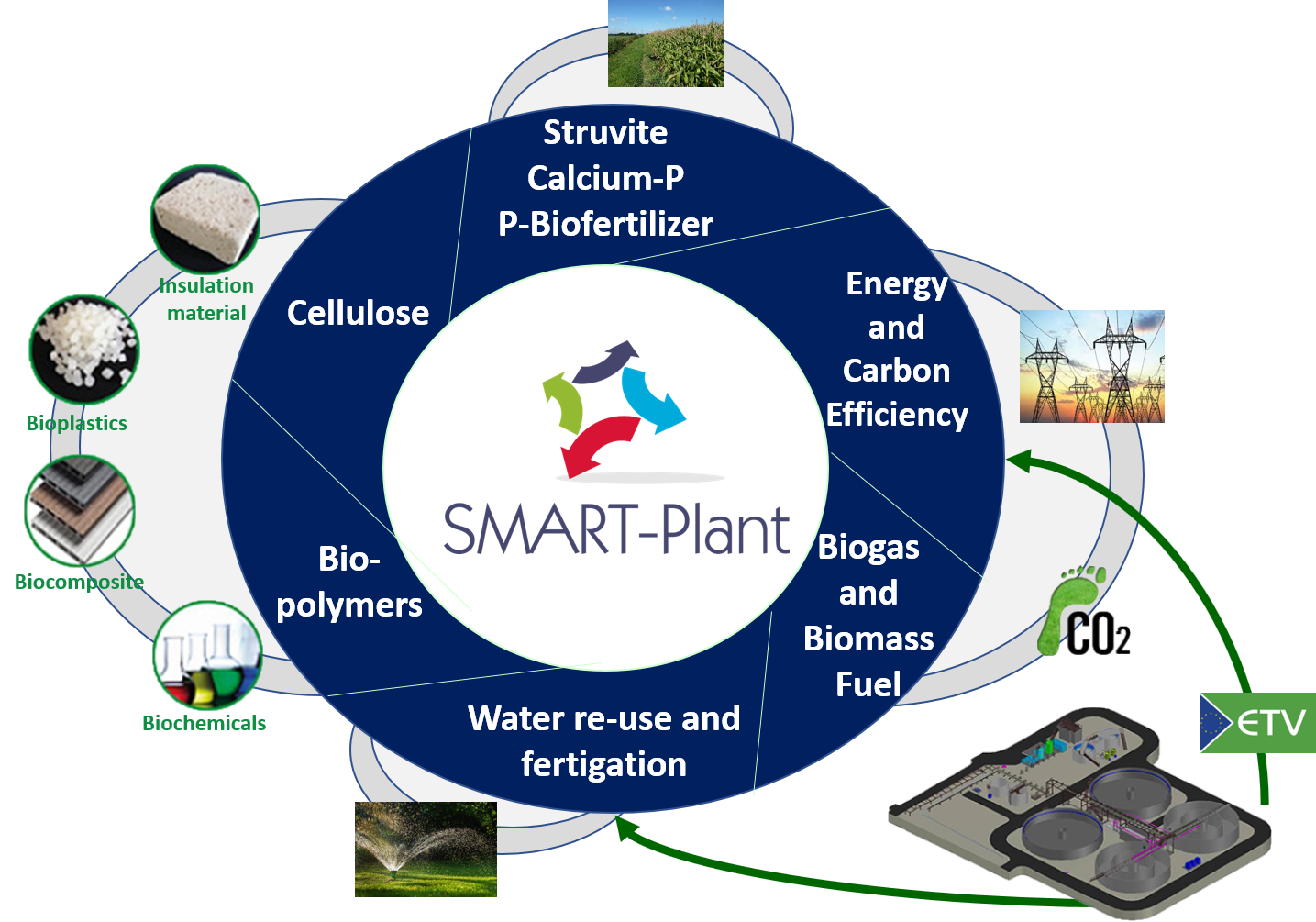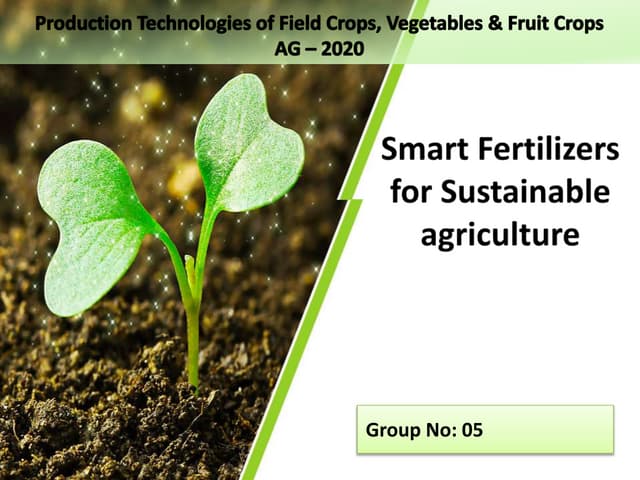
Introduction: The Dawn of Smart Agriculture
Imagine a world where every plant receives exactly what it needs, when it needs it. No more guesswork, no more wasted resources, just precise, data-driven care. This isn’t some futuristic fantasy; it’s the promise of smart agriculture, and it’s rapidly becoming a reality thanks to smart plant sensors. These tiny but mighty devices are transforming how we understand and manage soil, the very foundation of our food supply. By continuously monitoring key soil parameters, smart sensors empower farmers and gardeners to make informed decisions, optimize resource use, and ultimately cultivate healthier, more productive crops.
Understanding the Importance of Soil Health
Before we dive into the technology, let’s take a moment to appreciate the critical role of soil health. Soil isn’t just dirt; it’s a complex ecosystem teeming with life. A healthy soil is rich in organic matter, teeming with beneficial microbes, and possesses the right balance of nutrients, moisture, and air. It provides plants with the physical support, water, and nutrients they need to thrive. Poor soil health, on the other hand, can lead to stunted growth, nutrient deficiencies, increased susceptibility to pests and diseases, and ultimately, reduced yields. Factors like intensive farming practices, erosion, and climate change can all degrade soil health, making it imperative to adopt sustainable management strategies.
What are Smart Plant Sensors?
Smart plant sensors are sophisticated devices designed to measure various parameters related to plant health and environmental conditions. They typically consist of sensors, a data processing unit, and a communication module. These sensors can be deployed directly in the soil to monitor conditions at the root level, attached to plant stems or leaves to measure physiological parameters, or placed above the canopy to monitor the microclimate. The data collected by these sensors is transmitted wirelessly to a central hub or cloud platform, where it can be analyzed and visualized. This real-time data stream provides valuable insights into plant health and environmental conditions, enabling informed decision-making.
Types of Soil Sensors
Several types of sensors are commonly used to assess soil health. Each type measures different parameters, providing a comprehensive view of the soil environment:
- Moisture Sensors: Measure the water content in the soil, helping to optimize irrigation schedules and prevent over- or under-watering.
- Nutrient Sensors: Detect the levels of essential nutrients like nitrogen, phosphorus, and potassium, enabling precise fertilization and preventing nutrient deficiencies or toxicities.
- pH Sensors: Measure the acidity or alkalinity of the soil, which affects nutrient availability and plant growth.
- Temperature Sensors: Monitor soil temperature, which influences seed germination, root growth, and microbial activity.
- Electrical Conductivity (EC) Sensors: Measure the salinity of the soil, which can indicate the presence of excessive salts that can harm plant growth.
Benefits of Implementing Smart Plant Sensors
The adoption of smart plant sensors offers a wide range of benefits for farmers, gardeners, and researchers alike:
1. Optimized Irrigation
Water is a precious resource, and efficient irrigation is crucial for sustainable agriculture. Smart moisture sensors provide real-time data on soil moisture levels, allowing farmers to irrigate only when and where it’s needed. This prevents water waste, reduces energy consumption, and minimizes the risk of over- or under-watering, which can both harm plant health.
2. Precise Fertilization
Fertilizers are essential for providing plants with the nutrients they need to grow, but excessive fertilization can pollute waterways and harm the environment. Nutrient sensors allow farmers to monitor nutrient levels in the soil and apply fertilizers only when and where they’re needed. This optimizes nutrient use, reduces fertilizer costs, and minimizes environmental impact.
3. Early Disease Detection
Plant diseases can devastate crops, leading to significant economic losses. Smart sensors can detect subtle changes in plant health, such as variations in leaf temperature or chlorophyll content, which may indicate the onset of disease. Early detection allows farmers to take timely action, preventing the disease from spreading and minimizing crop damage. For example, some sensors can detect volatile organic compounds (VOCs) released by plants under stress, providing an early warning of potential problems.
4. Improved Crop Yields
By optimizing irrigation, fertilization, and disease management, smart plant sensors can significantly improve crop yields. Healthier plants are more productive, and precise resource management ensures that they receive everything they need to thrive. Studies have shown that the use of smart sensors can increase crop yields by as much as 20-30%.
5. Reduced Labor Costs
Traditional farming practices often require manual monitoring of soil conditions and plant health, which can be time-consuming and labor-intensive. Smart sensors automate this process, freeing up farmers to focus on other important tasks. Remote monitoring capabilities also reduce the need for frequent on-site visits, saving time and travel expenses.
6. Data-Driven Decision Making
Smart sensors provide a wealth of data that can be used to make informed decisions about crop management. By analyzing historical data, farmers can identify trends and patterns, optimize their farming practices, and improve their overall efficiency. Data-driven decision-making leads to more sustainable and profitable farming operations.
7. Environmental Benefits
The use of smart plant sensors promotes sustainable agriculture practices that benefit the environment. By optimizing resource use, reducing fertilizer runoff, and minimizing pesticide use, smart sensors help to protect water quality, conserve biodiversity, and reduce greenhouse gas emissions. They contribute to a more environmentally friendly and sustainable food system.
Implementing Smart Plant Sensors: A Step-by-Step Guide
Implementing smart plant sensors may seem daunting, but with careful planning and execution, it can be a straightforward process. Here’s a step-by-step guide to help you get started:
1. Define Your Objectives
Before you start shopping for sensors, it’s important to define your objectives. What specific problems are you trying to solve? What data do you need to collect? What are your desired outcomes? Clearly defining your objectives will help you choose the right sensors and develop a successful implementation plan. For example, are you primarily concerned with water conservation, nutrient management, or disease prevention? Understanding your priorities will guide your sensor selection and data analysis efforts.
2. Choose the Right Sensors
With so many different types of sensors available, it’s important to choose the ones that are best suited for your needs. Consider the specific parameters you need to measure, the accuracy and reliability of the sensors, and the cost. Also, consider the compatibility of the sensors with your existing infrastructure and data management systems. Read reviews, compare specifications, and consult with experts to make an informed decision. Factors such as soil type, climate conditions, and crop type can influence the optimal sensor selection.
3. Install the Sensors
Follow the manufacturer’s instructions carefully when installing the sensors. Proper installation is crucial for ensuring accurate and reliable data. Pay attention to sensor placement, wiring, and power supply. Also, consider the environmental conditions in your area and take steps to protect the sensors from damage. For soil sensors, ensure proper contact with the soil for accurate readings. For above-ground sensors, consider factors such as sunlight exposure and wind conditions.
4. Connect to a Data Platform
Once the sensors are installed, you’ll need to connect them to a data platform. This could be a cloud-based platform, a local server, or a mobile app. The data platform will collect, store, and analyze the data from the sensors. Choose a platform that is user-friendly, scalable, and compatible with your existing systems. Ensure that the platform provides data visualization tools that allow you to easily interpret the data and make informed decisions. Consider factors such as data security, data storage capacity, and data analysis capabilities when selecting a platform.
5. Calibrate and Test the Sensors
Before you start using the sensors, it’s important to calibrate and test them to ensure that they are providing accurate readings. Follow the manufacturer’s instructions for calibration. Compare the sensor readings to known values to verify their accuracy. If necessary, adjust the sensors to improve their accuracy. Regular calibration is essential for maintaining the reliability of the data over time.
6. Analyze the Data
Once you’re collecting data, it’s important to analyze it regularly. Look for trends and patterns that can help you optimize your farming practices. Use data visualization tools to identify areas where you can improve resource management, reduce costs, and increase yields. Share your findings with other farmers and researchers to learn from their experiences. Consider using statistical analysis techniques to identify significant relationships between different variables. Machine learning algorithms can also be used to predict future trends and optimize crop management strategies.
7. Adjust Your Practices
Based on the data analysis, adjust your farming practices as needed. Optimize your irrigation schedules, fertilization rates, and pest control strategies. Monitor the results of your adjustments and continue to refine your practices over time. The key to success is to continuously learn and adapt based on the data you’re collecting. Embrace a data-driven approach to farming and be willing to experiment with new techniques. Regularly review your data and adjust your practices to maximize your efficiency and profitability.
Challenges and Considerations
While smart plant sensors offer numerous benefits, there are also some challenges and considerations to keep in mind:
1. Cost
The initial cost of purchasing and installing smart plant sensors can be a barrier for some farmers, especially those with small-scale operations. However, the long-term benefits of improved resource management and increased yields can often outweigh the initial investment. Look for government subsidies, grants, and financing options to help offset the cost. Consider starting with a small-scale implementation to test the technology and demonstrate its value before investing in a larger system. The cost of sensors is also decreasing over time, making them more accessible to a wider range of farmers.
2. Data Interpretation
The sheer volume of data generated by smart sensors can be overwhelming. Farmers need to have the skills and knowledge to interpret the data and make informed decisions. Training and support are essential for ensuring that farmers can effectively use the technology. Data visualization tools and user-friendly data platforms can help to simplify the data interpretation process. Consider working with agricultural consultants or extension agents to get expert advice on data analysis and interpretation. Collaboration with other farmers and researchers can also provide valuable insights.
3. Connectivity
Smart plant sensors require reliable internet connectivity to transmit data to the cloud. In rural areas, internet access can be limited or unreliable. This can be a major obstacle to the adoption of smart sensor technology. Consider using alternative communication technologies, such as satellite internet or cellular networks. Explore options for local data storage and processing in areas with limited connectivity. Work with internet service providers to improve internet access in rural areas.
4. Data Security
The data collected by smart sensors is valuable and sensitive. It’s important to protect this data from unauthorized access and cyberattacks. Implement robust security measures, such as encryption, firewalls, and access controls. Choose data platforms that have strong security protocols in place. Regularly update your security software and monitor your systems for suspicious activity. Educate your employees about data security best practices. Consider using a VPN to encrypt your data traffic.
5. Maintenance
Smart plant sensors require regular maintenance to ensure that they are functioning properly. This includes cleaning the sensors, replacing batteries, and calibrating the sensors. Develop a maintenance schedule and stick to it. Train your employees on how to perform basic maintenance tasks. Keep spare parts on hand to minimize downtime. Consider purchasing sensors with warranties that cover maintenance and repairs.
Case Studies: Success Stories of Smart Plant Sensor Implementation
Numerous case studies demonstrate the effectiveness of smart plant sensors in improving agricultural practices. Here are a few examples:
Case Study 1: Precision Irrigation in a Vineyard
A vineyard in California implemented smart moisture sensors to optimize irrigation. The sensors provided real-time data on soil moisture levels, allowing the vineyard manager to irrigate only when and where it was needed. As a result, the vineyard reduced its water consumption by 25% and improved the quality of its grapes.
Case Study 2: Nutrient Management in a Cornfield
A corn farmer in Iowa used nutrient sensors to monitor nitrogen levels in the soil. The sensors allowed the farmer to apply nitrogen fertilizer only when and where it was needed. This reduced fertilizer costs by 15% and minimized nitrogen runoff into local waterways.
Case Study 3: Disease Detection in a Tomato Greenhouse
A tomato greenhouse in the Netherlands implemented smart sensors to detect early signs of disease. The sensors monitored leaf temperature and humidity levels, allowing the greenhouse manager to identify and treat diseases before they spread. This reduced crop losses by 20% and minimized the use of pesticides.
The Future of Smart Plant Sensors
The future of smart plant sensors is bright. As technology advances, sensors will become more accurate, affordable, and user-friendly. We can expect to see the development of new sensors that can measure a wider range of parameters, such as plant stress levels, photosynthetic activity, and fruit ripeness. We can also expect to see the integration of smart sensors with other technologies, such as drones, robots, and artificial intelligence. This will enable even more precise and automated crop management. The convergence of these technologies will revolutionize agriculture, leading to more sustainable, efficient, and profitable farming operations.
Integration with AI and Machine Learning
The integration of smart plant sensors with artificial intelligence (AI) and machine learning (ML) holds immense potential for transforming agriculture. AI and ML algorithms can analyze the vast amounts of data generated by sensors to identify patterns, predict future trends, and optimize crop management strategies. For example, AI can be used to predict the optimal time for harvesting crops, based on sensor data and weather forecasts. ML can be used to identify early signs of disease and recommend targeted treatments. The combination of smart sensors and AI will enable farmers to make more informed decisions and improve their overall efficiency.
The Role of Drones and Robotics
Drones and robots are increasingly being used in agriculture to automate various tasks, such as planting, spraying, and harvesting. Smart plant sensors can be integrated with drones and robots to provide real-time data on crop health and environmental conditions. This data can be used to guide the actions of the drones and robots, ensuring that they are performing their tasks effectively and efficiently. For example, drones equipped with multispectral cameras and smart sensors can be used to map crop health and identify areas that need attention. Robots can be used to apply pesticides or fertilizers only to the areas that need them, reducing waste and minimizing environmental impact. The integration of smart sensors, drones, and robots will lead to more automated and precise farming operations.
Conclusion: Embracing the Future of Agriculture
Smart plant sensors are revolutionizing agriculture by providing farmers with the data they need to make informed decisions, optimize resource use, and cultivate healthier, more productive crops. While there are challenges to overcome, the benefits of implementing smart sensor technology are undeniable. As technology continues to advance, we can expect to see even more innovative applications of smart plant sensors in agriculture. By embracing these technologies, we can create a more sustainable, efficient, and resilient food system for the future. The journey towards smart agriculture is an ongoing process of learning, adaptation, and innovation. By embracing a data-driven approach and collaborating with other farmers, researchers, and technology providers, we can unlock the full potential of smart plant sensors and create a brighter future for agriculture.


